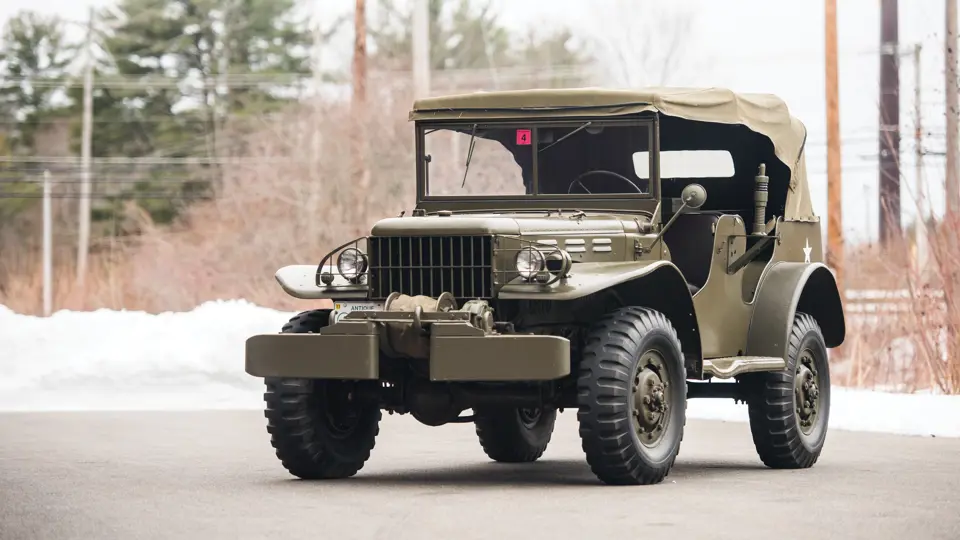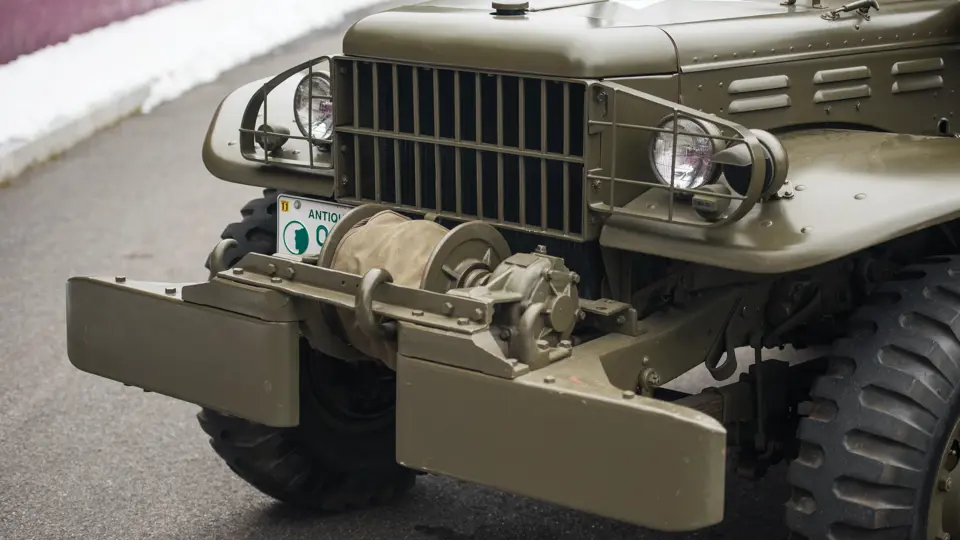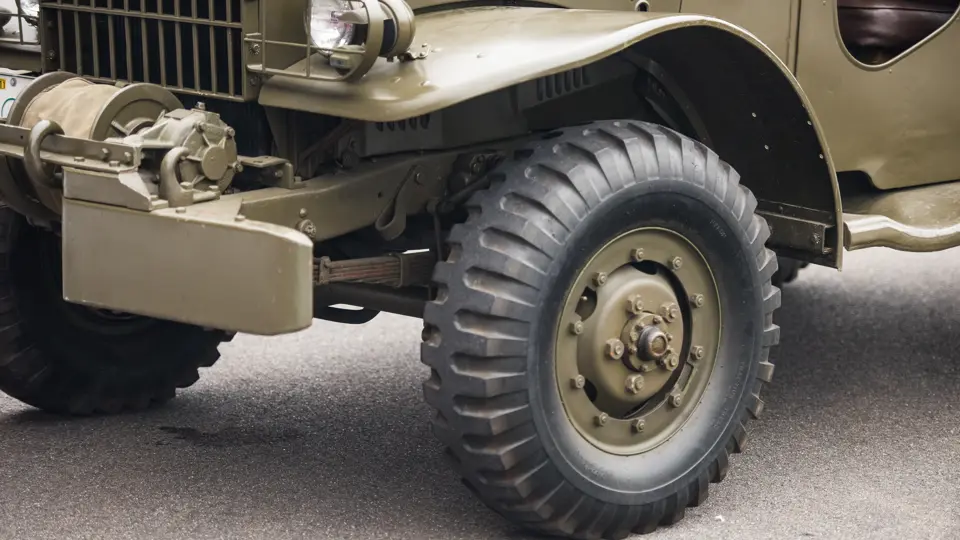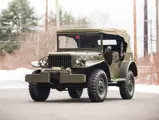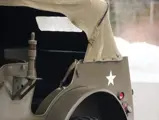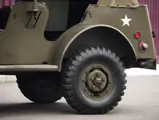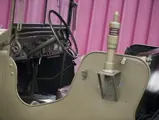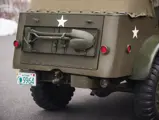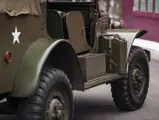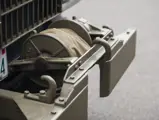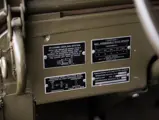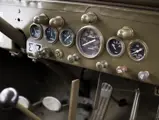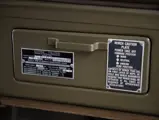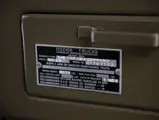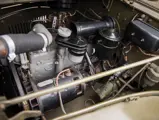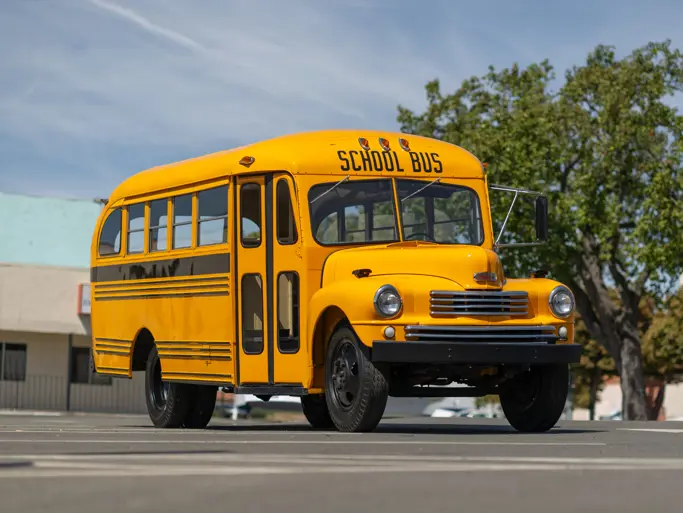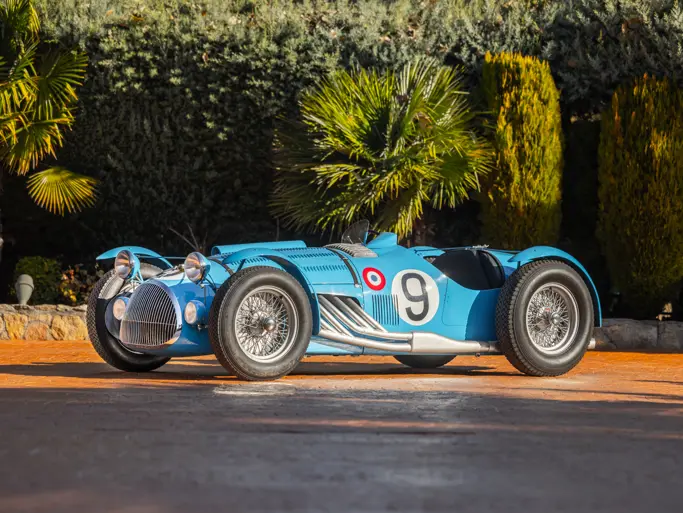While the Army’s light vehicle needs in World War II were met by Willys and Ford Jeeps, heavier trucks were largely the purview of Dodge. Over the course of the war, some 700,000 vehicles in the VC and WC series, from ½-ton to 1½-tons, were delivered to U.S. forces. Most numerous are the WCs, a nomenclature commonly believed to derive from “Weapons Carrier.” In fact, it was Dodge’s own company designation, dating from 1941 and unchanged for the duration. Engines were all L-head sixes, in various configurations. The engine in this truck, the T214, was a 92-bhp, 230.2-cu.-in. L-head six. That type of engine would live on into the 1950s in passenger cars, and until 1968 in the WC’s successor, the civilian Power Wagon.
Backing up the Dodge six was a four-speed manual transmission, and a single-speed transfer case for four-wheel drive. Multiple speed ranges were not deemed important for wartime service: the standard 5.83:1 axles were intended for grueling journeys over rugged terrain.
There were no fewer than 57 WC variants, from WC-1 to WC-64 (a few numbers were omitted). This truck’s chassis number shows that it began life around April 1945 as a WC-52 “Truck, Cargo, ¾-ton, 4 × 4 w/Winch” in Army lingo, more familiarly known as “Weapons Carrier.” Michael Dingman purchased it from Green Valentine of Memphis, Tennessee, a dealership operated by George Coleman in January 2000. The previous owner was Tim Corliss of Sumner, Washington, who had found it in 1995 in Fort Collins, Colorado, and restored it. At restoration, it was configured as a WC-58 Radio Car, with a Signal Corps Radio installed in the rear seat area and whip antenna on the left side (though, unfortunately, the radio has since been removed). This involved using the body from a 1943 WC-56 or WC-57 Command Car. The restoration took some five years, including the sourcing of hard-to-find parts.
It stands tall, nearly eight feet high, and weighs 5,335 lbs. empty. The body is straight, in a literal sense, as there are few curves on it. The paint is a semi-gloss olive drab color, and the soft top is done in matching military canvas. The seats are a brown artificial leather, in very good condition. There are no floor mats, just steel diamond plates. The undercarriage and engine compartment are best described as tidy and utilitarian. The truck has a 12-volt electrical system, to original specification. There is a winch on the front bumper, a shovel and axe on the rear compartment lid, below which is a pintle hook. A jerry can on the right-hand running board completes the equipment complement. The radio cabinet is fastened to the floor in the rear seat area, with a whip antenna on the left side. The tires are unbranded 9.00-16 8-ply military tread type, showing considerable age.
Like its smaller cousin, the Jeep, the WC-series command and radio cars are icons of another age, and grandfathers of the long-lived Dodge Power Wagons of modern times.
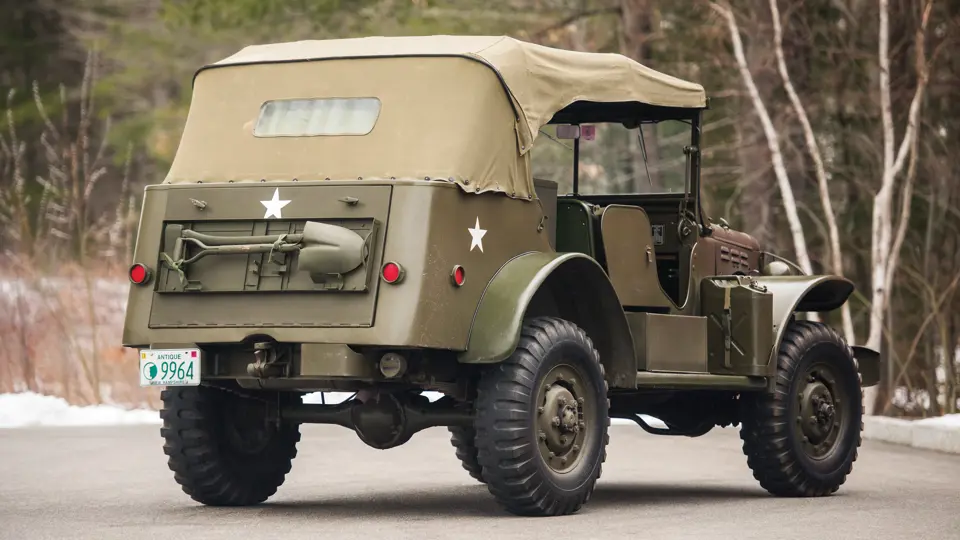



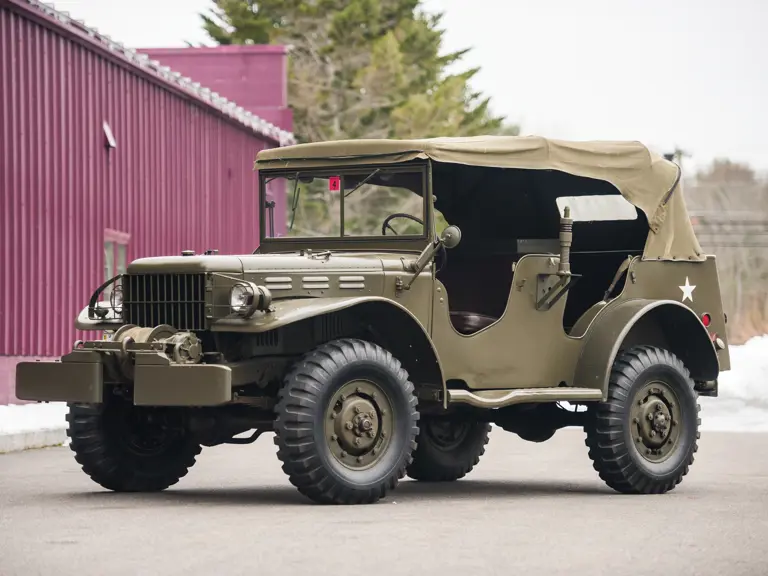
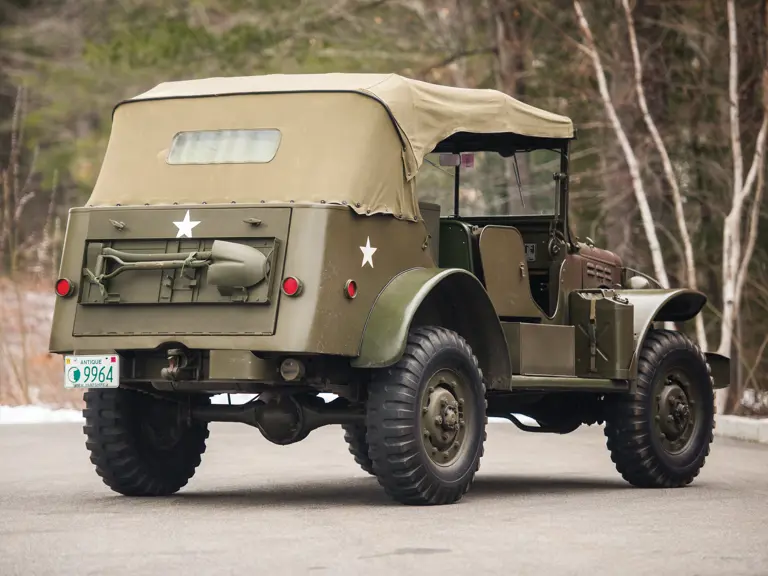
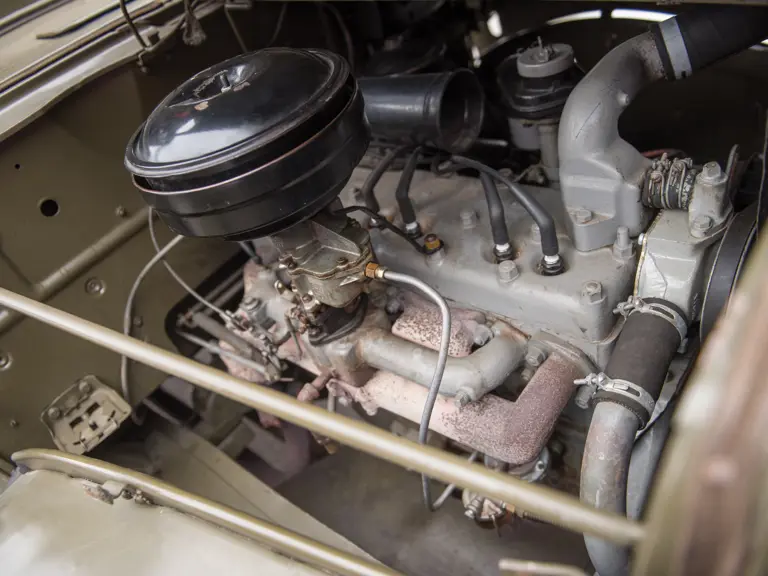
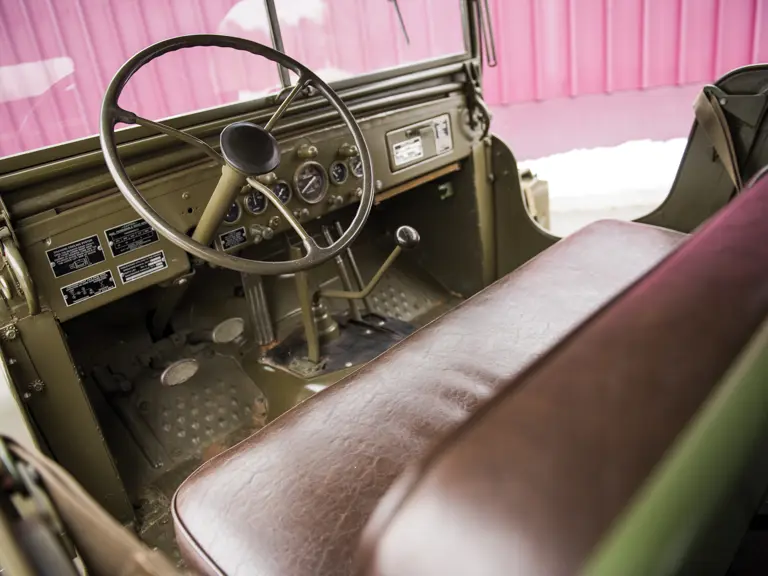

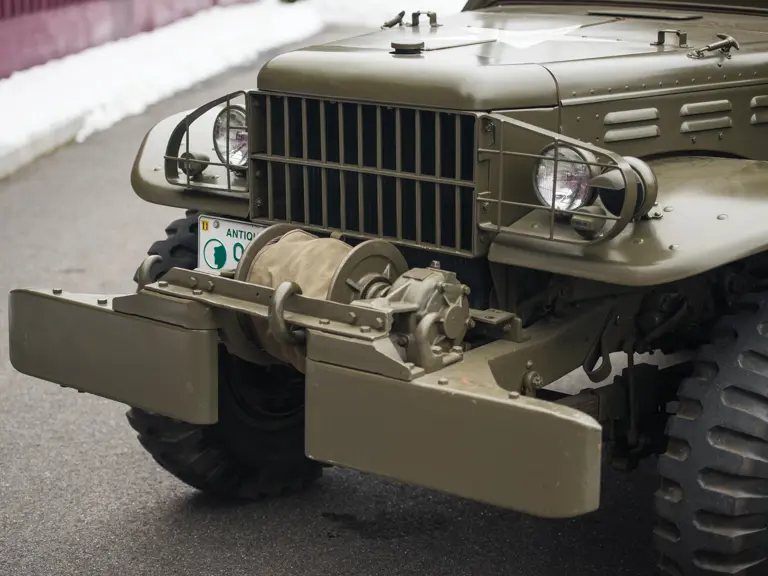
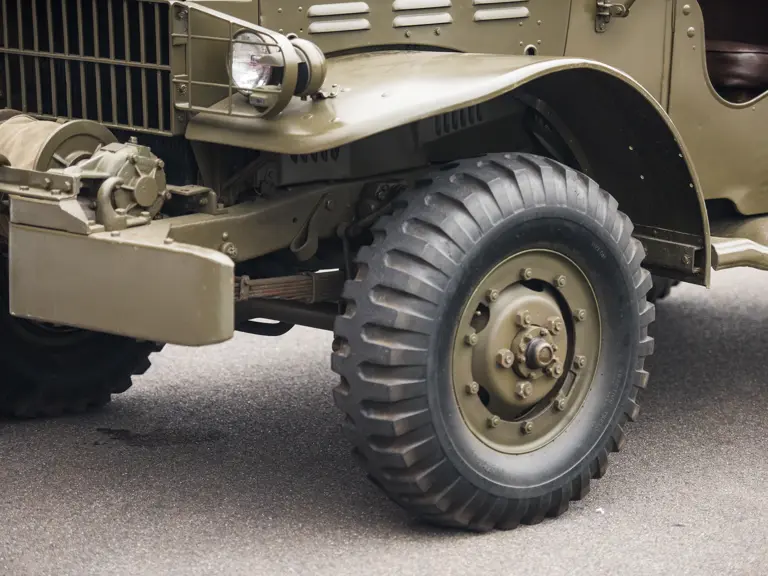

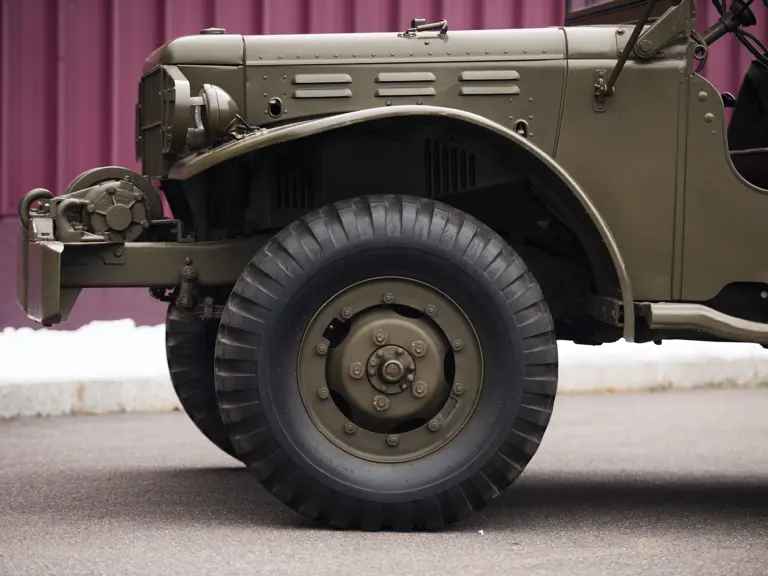
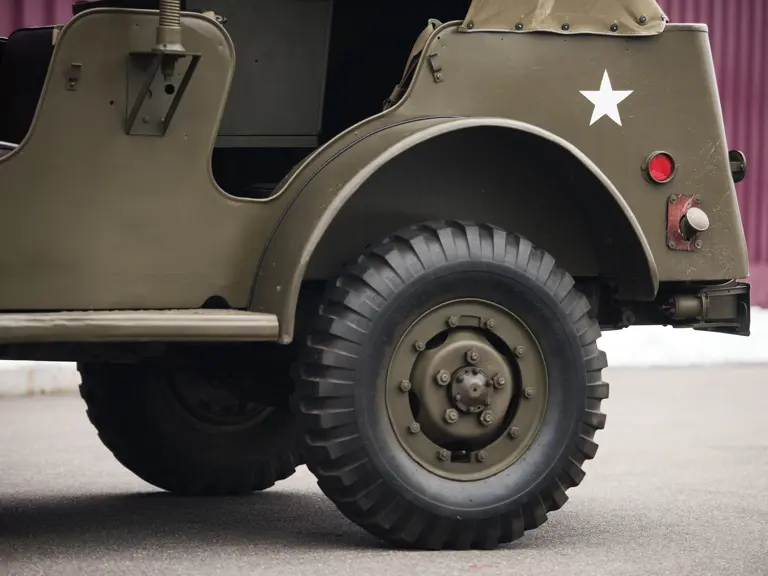
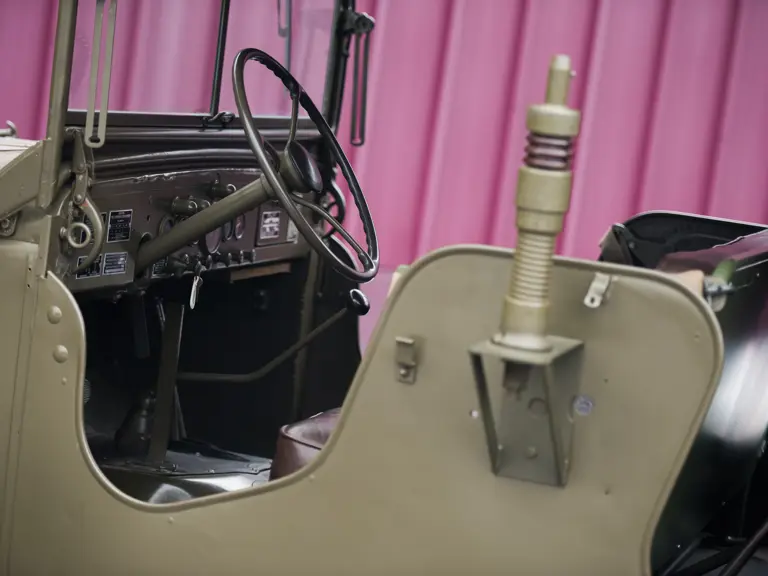
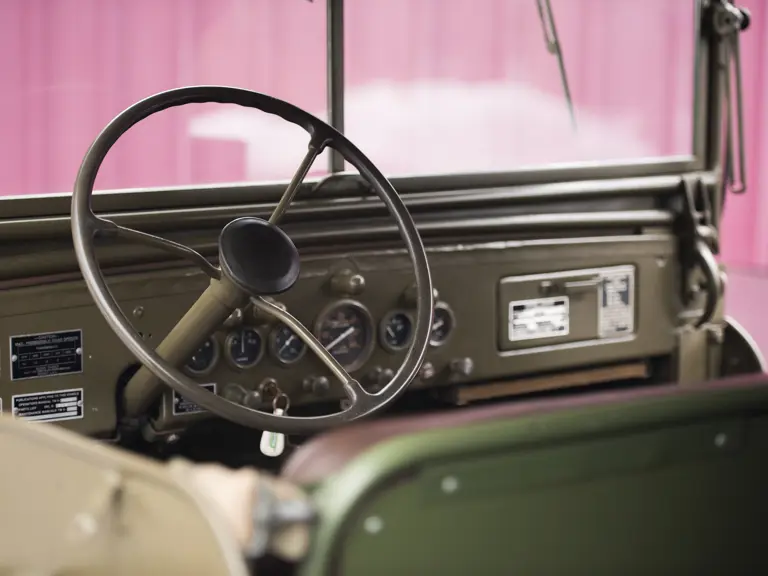

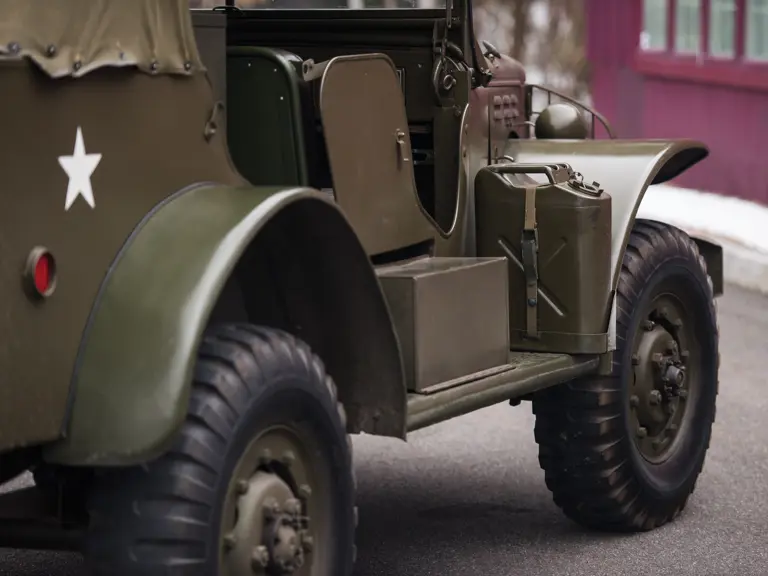


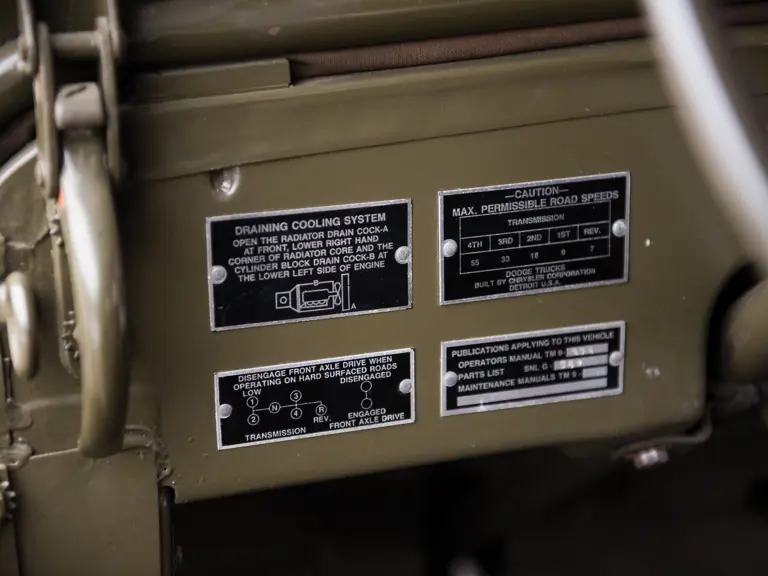
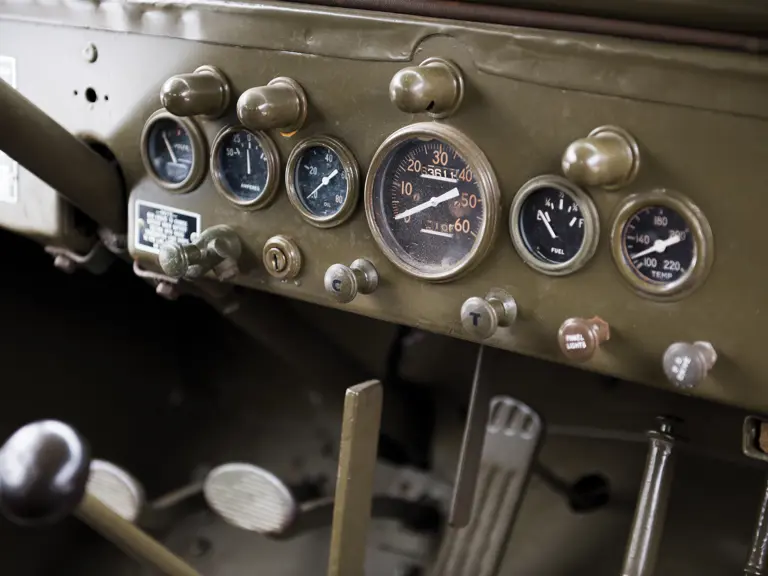
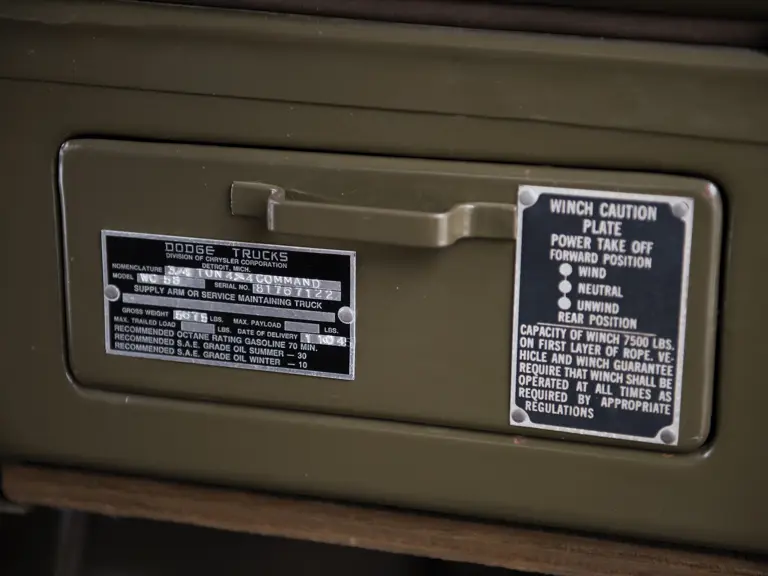
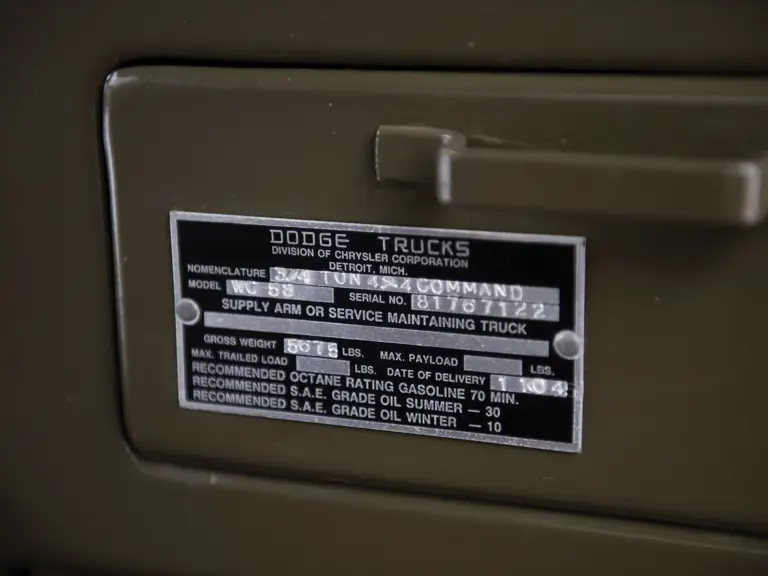
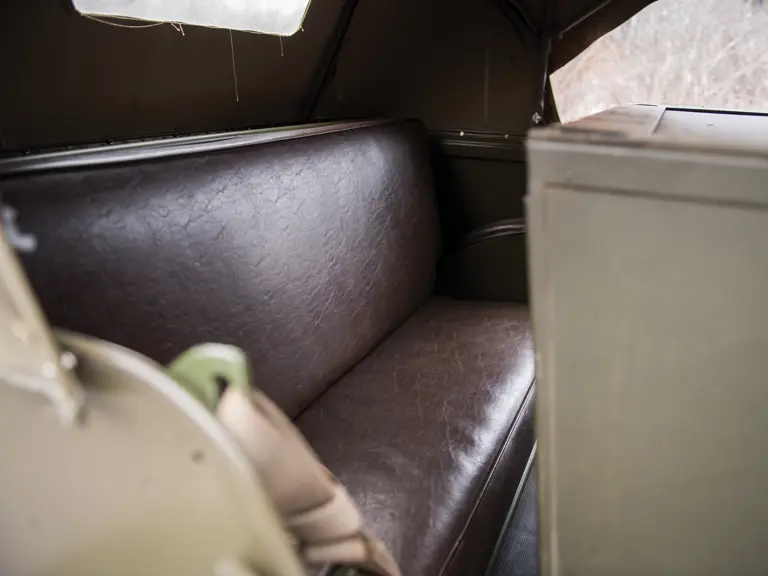
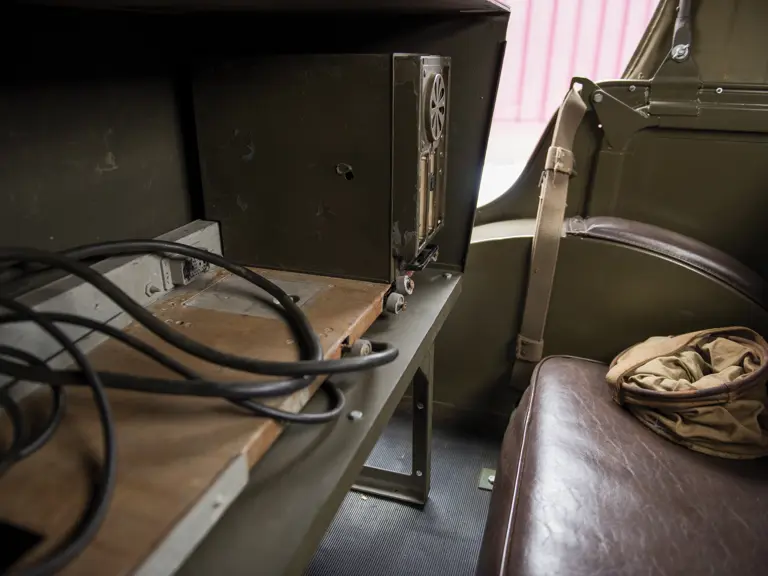
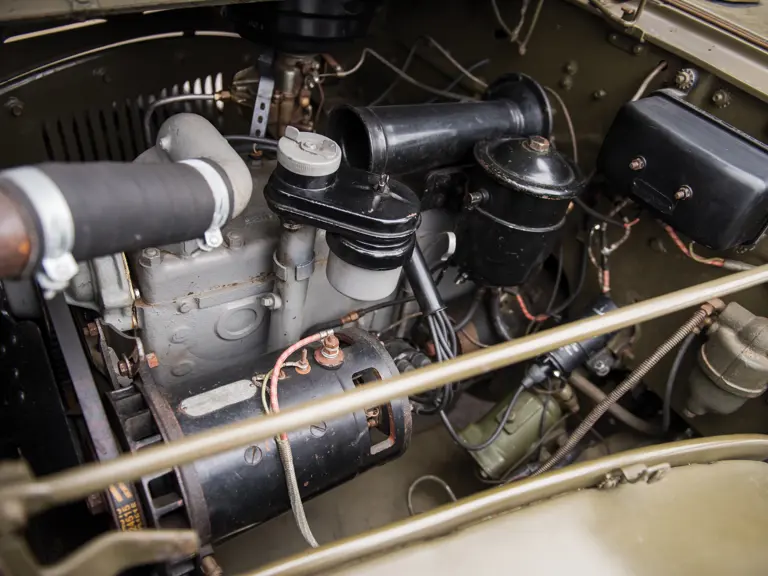
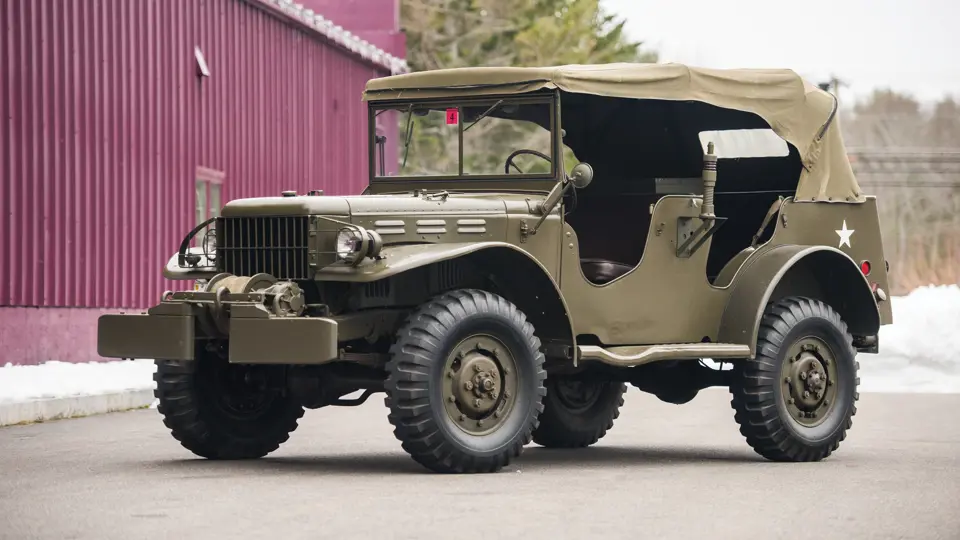
 | Hampton, New Hampshire
| Hampton, New Hampshire
